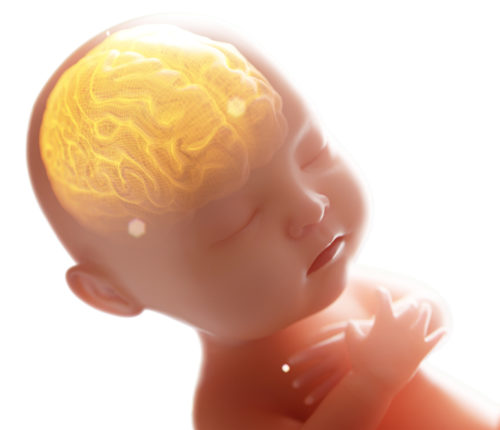
Neonatal Therapeutic Hypothermia
Neonatal therapeutic hypothermia is a relatively new treatment option for oxygen deprivation at birth. Therapeutic hypothermia involves lowering an infant’s body temperature shortly after birth. This is done in order to reduce the chances of severe brain damage and slow down disease progression. While research is ongoing, many medical experts are advocates for this treatment and feel the benefits outweigh any risks.
How Does Neonatal Therapeutic Hypothermia Help Infants?
Research indicates that when people are injured, they heal better if the injury occurs in a cold environment. Based on this idea and other research, scientists and physicians developed the idea to use hypothermia in the clinical setting. Particularly, to treat anoxia and hypoxia and related injuries.
For infants who have brain damage due to oxygen deprivation, lowering the body’s temperature in a controlled setting can help prevent additional damage. This is especially important for infants experiencing conditions like hypoxic ischemic encephalopathy (HIE).
According to the National Institutes of Health (NIH), neonatal hypoxic ischemic encephalopathy (HIE) occurs in around 1 to 6 out of every 1,000 births. HIE is a lack of oxygen and blood to the brain. Without immediate treatment, infants are at risk not only of severe brain damage, but death as well. In fact, NIH states that around 15-20 percent of newborns who experience HIE will die.
Many infants with HIE are candidates for neonatal therapeutic hypothermia. During the process, the infant’s body temperature is decreased to between 32.5 to 34.5 degrees Celsius (90.5 to 94.1 degrees Fahrenheit).
The type of clinical setting used will depend upon the infant’s injuries as well as the available resources at the hospital. In most instances, however, babies are placed on a baby cooling pad or blanket that’s filled with water. Healthcare providers will monitor the infant over the next 72 hours while their metabolic processes slow down.
Expert Opinions on Neonatal Therapeutic Hypothermia
Although there still aren’t definitive answers on how well neonatal therapeutic hypothermia works on all newborns, clinical trials have been promising. Hypothermia treatment is also used for hypoxic ischemic encephalopathy in adults. Many experts feel that it should become standard treatment care for infants who are deprived of oxygen.
“We have found that therapeutic hypothermia can reduce the chance of severe brain injury by 25 percent in term-born babies with poor transition or low Apgar scores after birth,” said Dr. Inder of Washington University School of Medicine. “It is very important that these babies are referred to us as soon as possible because it appears this treatment may not work as well after the first few hours of life.”
Dr. Seetha Shankaran, division director of neonatal and perinatal medicine for the DMC Children’s Hospital of Michigan is also an advocate of neonatal therapeutic hypothermia. As the lead director of a study on neonatal therapeutic hypothermia, Dr. Shankaran states that there are many benefits and that treatment could mean many infants can be saved from developing cerebral palsy and other debilitating conditions caused by brain damage.
“I don’t think there’s any doubt that these findings will have a significant impact on the medical treatment of newborns who experience oxygen deprivation at birth,” said Dr. Shankaran. “This is a very hopeful breakthrough for all of us who work in the field of neonatal medicine.”
When is Neonatal Therapeutic Hypothermia Needed?
In most cases, physicians will do all that they can to ensure a baby is as healthy as possible. However, there are certain signs that indicate that an infant may be at risk for oxygen loss, including:
- Fetal heart abnormalities
- Meconium aspiration syndrome
- A difficult delivery
- Fetal macrosomia
- Intrauterine growth restriction (IUGR)
- Lack of oxygen in the mother’s blood before birth
- A delayed C-section
- Umbilical cord problems during delivery
- Preeclampsia
- Fetal anemia
- Preterm labor and birth
Criteria For Neonatal Therapeutic Hypothermia
In most instances, babies must qualify for neonatal therapeutic hypothermia treatment, which may include the following:
- An Apgar score of <5 after 10 minutes of birth
- Need for resuscitation and oxygen after 10 minutes of birth
- Infants born 36 weeks gestation and older
- Infants with moderate to severe encephalopathy (abnormal brain functions)
Are There Any Risks?
Research indicates that so far, the benefits of neonatal therapeutic hypothermia outweigh the risks involved. However, it’s important to understand that there may be certain risk factors involved. For instance, according to the World Health Organization (WHO) Reproductive Health Library, some studies show a slightly increased baseline heart rate in infants undergoing treatment, as well as an increased need for blood pressure support.
Neonatal therapeutic hypothermia doesn’t seem to help infants with seizures during the treatment period, which can be common in those who experience oxygen deprivation. Other studies indicated that coagulation (blood clotting) may occur, but this is normal if the infant was already experiencing it before the treatment began.
Long Term Benefits of Neonatal Therapeutic Hypothermia
According to NIH, there are quite a few long-term benefits to neonatal therapeutic hypothermia. For instance, children who undergo treatment as infants are more likely to have a higher survival rate at 6-7 years of age. In addition, infants who receive the treatment are less likely to develop severe developmental delays such as hearing loss, vision loss and cognitive impairments. Furthermore, the rate of infant death declines with those receiving neonatal therapeutic hypothermia treatment.
“Before the advent of this cooling treatment in 2005, doctors couldn’t treat HIE, and many infants died or sustained brain injury,” said Dr. Shankaran.“It’s reassuring to see that the benefits of this practice, which have been widely documented at 18 months or 2 years of age, are apparent as these children grow.”
Additional Information
If you’re experiencing a difficult pregnancy, it’s important to discuss the possibility of neonatal therapeutic hypothermia with your physician. This is not to say that all difficult pregnancies will result in infant brain damage, yet, it’s always a good idea to be prepared and understand how the treatment works.
Currently, there is no other effective type of treatment for severe infant brain damage, yet more studies and trials are needed before neonatal therapeutic hypothermia becomes a standard treatment option.
Sources:
- http://www.ncbi.nlm.nih.gov/pubmed/20603466
- https://www.floridahospital.com/hypothermia-treatment
- https://www.childrensdmc.org/services/neonatal-and-perinatal-medicine/neonatal-services
- http://www.nih.gov/news/health/may2012/nichd-30.htm
- https://www.uptodate.com/contents/hypoxic-ischemic-brain-injury-in-adults-evaluation-and-prognosis



